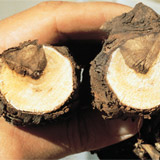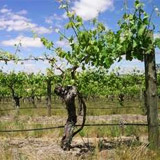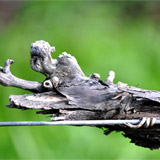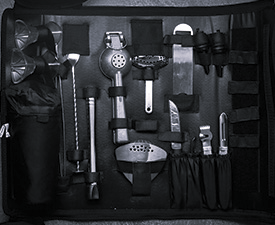Eutypa dieback is a common and costly disease (Eutypa lata - identified in the 1970's) of grapevines on most continents - most notably in California, France and Australia - caused by a deep-seated wood rot appearing as cankers on arms and trunks of infected grapevines.
It is one of the most destructive diseases on the woody tissue of grape vines. The fungus causing this disease has a wide host range, which includes at least 80 species in 27 botanical families. As the disease progresses over several years, one or more arms may die, hence the name 'dead-arm' - and eventually the whole vine will die.
The formation of wedge-shaped cankers near old wounds is a reliable indicator of Eutypa dieback. The dead tissue surrounding the old wound appears as a wedge-shaped area of dead and darkened tissue in the cross-section of wood. Symptoms are usually seen only in vines 5 or more years old - and 2 to 4 years after the infection of the pruning cut/ wound. Vine symptoms usually start to appear in spring when the new shoots appear. Typical symptoms include reduced growth of stems and leaves, causing the young leaves to become small, yellow, tattered edges - and having fewer and smaller fruit clusters. Since the pathogen can take several years to colonize the host, symptoms may not be seen until the vine is severely infected by the pathogen - making disease management difficult.
The cankers are hard to detect since they are concealed by old, dead bark, which can become somewhat flattened. Clusters on affected shoots can have a mixture of both large and small berries. Rain is necessary for the spread of this disease, and infections occur on freshly made prune cuts. The susceptibility of wounds decreases as they become older (2 to 4 weeks after pruning). Severely infected arms or vines develop fewer shoots each year and eventually die.
Remedial surgery has been recommended as a means of control. Infected sections are repeatedly cut with a saw until there is no evidence of infected wood.










